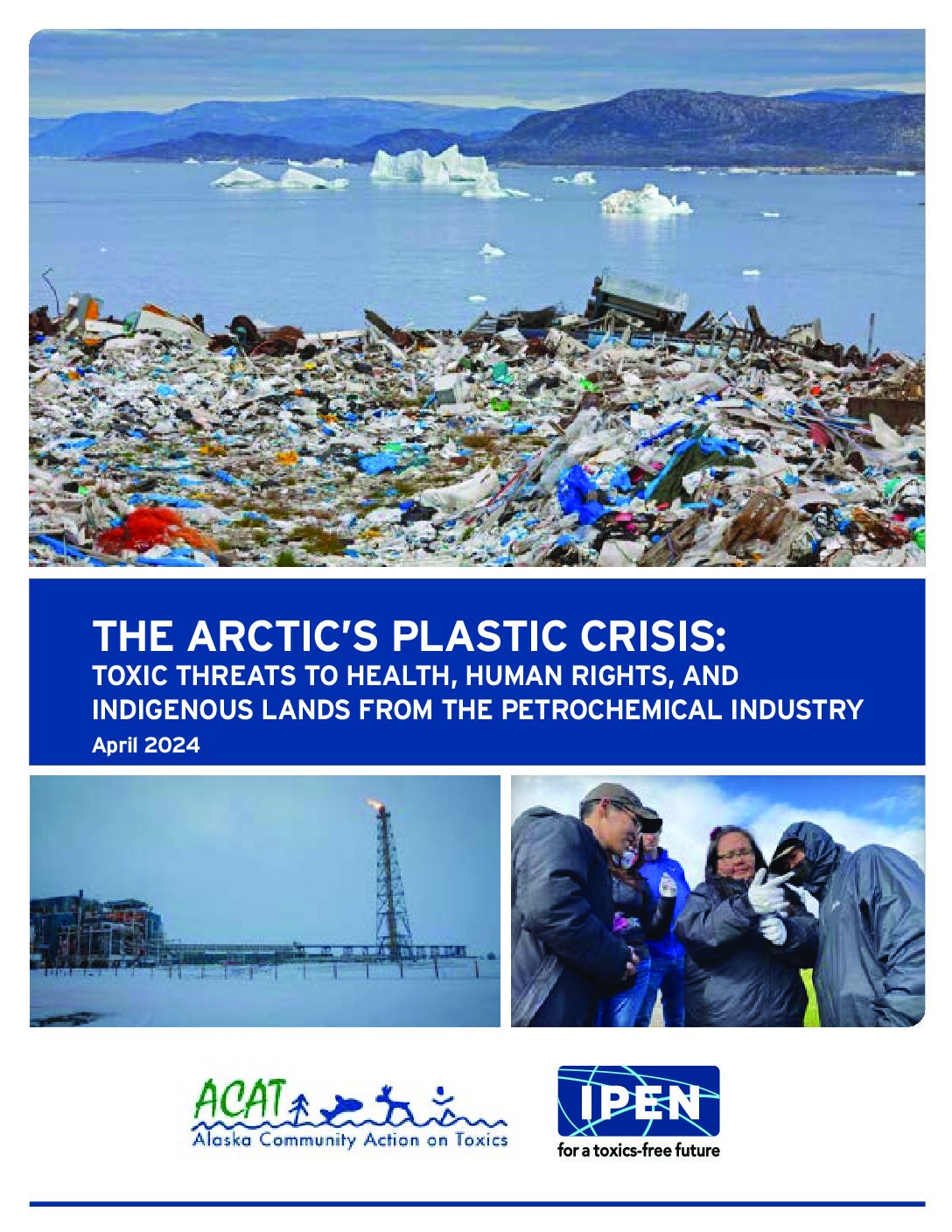Media Room
News
Human Rights, Health, and Lands of Arctic Peoples Endangered by Plastics, Petrochemicals and Climate Change
Human Rights, Health, and Lands of Arctic Peoples Endangered by Plastics, Petrochemicals and Climate Change BTE2X0 Rubbish at garbage dump and icebergs at Ilulissat / Jakobshavn, Disko-Bay, Greenland With the Arctic warming nearly four times faster than the rest of the world, Native voices speak out on threats to the Arctic posed by plastic and toxic chemicals. Report also synthesizes evidence from more than 250 studies. With the Plastics Treaty negotiations scheduled for this April 23-29 in Ottawa, a report released today synthesizes recent science on the interconnected threats from plastics, petrochemicals, and climate change that harm ...
Publications
The Arctic’s Plastic Crisis: Toxic Threats to Health, Human Rights, and Indigenous Lands From the Petrochemical Industry
Damage to the Arctic from the fossil fuel/petrochemical industry includes threats from chemicals, plastics, and climate. These have combined to poison the lands, waters, and traditional foods of Arctic Indigenous Peoples, with ongoing health effects that threaten their cultures and communities. This report highlights the voices and testimonies of Indigenous leaders who have witnessed these threats and who are engaged in local and global efforts to protect their land and People. Find multimedia content, including a video and podcast, related to the report here.
Webinars
Mapping Environmental Injustice: Disparities in Chemical Exposures and Neurodevelopmental Outcomes
One in six children in the U.S. has a developmental disability and the prevalence of those disabilities has increased over the past decade. Families with low incomes and families of color have long faced disproportionate exposures to toxic chemicals and pollutants known to hinder brain development. These inequities stem from histories of discriminatory policies. A recently published literature review, initiated by Project TENDR (Targeting Environmental Neuro-Development Risks), sheds light on the disparities in neurodevelopmental outcomes in children in low-income families and communities of color in the United States. The scoping review, which analyzes more than 200 studies conducted between 1974 ...


